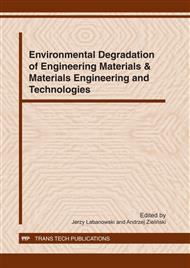p.25
p.31
p.37
p.43
p.49
p.57
p.65
p.71
p.81
Iodine-Induced Stress Corrosion Cracking of Zircaloy-4: Identification of Critical Parameters Involved in Intergranular to Transgranular Crack Propagation
Abstract:
During power transient conditions in nuclear reactors, uranium oxide pellets expand and crack due to the increase in temperature and their poor thermal conductivity. Moreover, the cladding undergoes creep because of the external pressure, and its diameter shortens. These antagonistic phenomena lead to the establishment of a contact between the pellet and the cladding, called the pellet-cladding interaction. The synergistic effect of the hoop tensile stress and strain imposed on the cladding by fuel thermal expansion and corrosion by iodine released from the UO2 fuel as a fission product at the same time can lead to Iodine-induced Stress Corrosion Cracking (I-SCC) of the Zircaloy-4 cladding. I-SCC failures of zirconium alloys are usually described in three steps: initiation of cracks, intergranular subcritical propagation, and critical propagation with a brittle transgranular propagation mode [1]. Transgranular propagation occurs as soon as the stress intensity factor overshoots a threshold value KI,SCC. It is the critical step and leads to the final ductile failure of the cladding. Transgranular cracks propagate by cleavage-like fracture on basal planes of the hexagonal lattice and fluting; it is the result of a competition between a plastic accommodation of the applied strain and the brittle fracture of basal planes by iodine assisted cleavage.
Info:
Periodical:
Pages:
49-56
Citation:
Online since:
December 2011
Authors:
Price:
Сopyright:
© 2012 Trans Tech Publications Ltd. All Rights Reserved
Share:
Citation:


